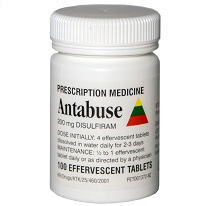General Information on Amantadine
Amantadine is an antiviral and antiparkinsonian medication. It functions by inhibiting certain viral activities, specifically influencing influenza A virus replication. Additionally, it impacts dopamine levels, aiding in Parkinson’s disease management. The drug comes in various formulations, predominantly as an oral capsule or tablet. Amantadine has been available for several decades and is prescribed under different names depending on the manufacturer and specific formulation.
Pharmacological Properties
Amantadine exhibits unique pharmacokinetic properties. It is rapidly absorbed from the gastrointestinal tract, with peak plasma concentrations typically achieved within two to four hours after administration. The drug has a relatively long half-life, generally ranging from 10 to 30 hours, influenced by factors such as renal function. This extended half-life allows for dosing once or twice daily, depending on clinical needs and patient-specific factors.
Mechanism of Action
The primary mechanism involves the inhibition of the viral M2 protein, which is essential for the viral replication process of influenza A. In relation to Parkinson’s, amantadine promotes dopamine release and blocks reuptake, enhancing dopaminergic activity in the brain. This dual mechanism of action renders it versatile in its therapeutic applications, serving both antiviral and neurological purposes.
Indications for Use
Amantadine is primarily indicated for treating and preventing influenza A infections, especially in high-risk patients. It is also prescribed for Parkinson’s disease, particularly in managing symptoms such as tremors, stiffness, and bradykinesia. Additionally, it is used to treat medication-induced extrapyramidal symptoms. The versatility of amantadine in addressing these distinct conditions demonstrates its clinical significance in diverse therapeutic areas.
Dosage and Administration
Standard adult doses for influenza prophylaxis and treatment are typically 100 mg twice daily, while dosage adjustments may be necessary for elderly or renally impaired patients. In Parkinson’s, initial dosing usually starts at 100 mg per day, gradually increasing based on patient response and tolerance. Pediatric dosages, though less common, are calculated based on body weight and specific clinical circumstances. Always follow physician directives precisely for optimal outcomes.
Drug Interactions
Amantadine can interact with several other medications, necessitating vigilance. Coadministration with anticholinergics may exacerbate side effects such as confusion and hallucinations. Concomitant use with CNS stimulants or sympathomimetic agents can augment nervous system-related adverse events. Healthcare providers should assess all concurrent medications, including over-the-counter drugs and supplements, to mitigate interaction risks and ensure patient safety.
Contraindications to Amantadine
Use of amantadine is contraindicated in patients with known hypersensitivity to the drug. It is also contraindicated in individuals with untreated angle-closure glaucoma due to potential exacerbation of the condition. Monitoring is essential for patients with significant congestive heart failure, psychiatric disorders, and renal impairment, as amantadine may exacerbate these preexisting conditions. Clear guidelines help clinicians determine patient suitability for this medication.
Common Adverse Reactions
Commonly encountered side effects include nausea, dizziness, and insomnia. Some patients may experience dry mouth, hypotension, and nervousness. Adverse reactions typically resolve upon dose adjustment or discontinuation. Less frequently, patients may report disturbances such as visual impairment or confusion. Patients should report any persistent or bothersome symptoms to healthcare providers promptly to address and adjust therapeutic regimens as necessary.
Monitoring and Precautions
Regular monitoring is crucial for patients on long-term amantadine therapy. Periodic assessment of renal function is recommended to tailor dosing appropriately. Mental health evaluations should be conducted for those with schizophrenia or manic-depressive tendencies due to potential exacerbation of psychiatric symptoms. Additionally, motor function assessments are advised for Parkinson’s patients to evaluate efficacy and adjust treatment strategies accordingly.
Special Populations Considerations
Special consideration is required for elderly patients, often necessitating dose adjustments due to altered pharmacokinetics and increased sensitivity to side effects. It is also imperative to exercise caution and evaluate risks and benefits when considering amantadine therapy in pregnant or lactating women. Pediatric use requires careful dosing aligned with weight and clinical need, with close monitoring for adverse effects due to the generalized immature physiological responses in this group.







Reviews
There are no reviews yet.